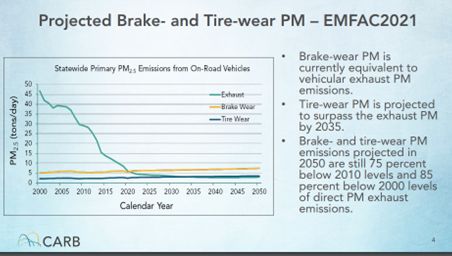Battery Weight: Hidden Costs of EVs versus ICEs
By Robert Bradley Jr. -- April 16, 2023“Electrifying vehicles adds yet more weight. Combustible, energy-dense petroleum is replaced by bulky batteries. And the rest of the vehicle must get heavier to provide the necessary structural support….. Why does this matter? First and foremost is safety.
“Heavier vehicles also generate more particulate pollution from tyre [tire] wear. They require more materials and energy to build and propel them, adding to emissions and energy use.”
An article in Nature from several years ago, underappreciated in today’s climate/energy debate, was recently emphasized in a social media post by Nick Molden, Founder and Chief Executive Officer, Emissions Analytics, and Honorary Research Fellow, Imperial College London.
Molden commented:
A certain level of CO2 reduction is required just to offset the extra accident death risk from heavier BEV vehicles. Some major countries already reach this level, although the US and Germany do not.
Without this effect, BEVs are on average about 20% better for lifecycle CO2 than full hybrids, from our testing. With the effect, this gap is even smaller on today’s grid.
This emphasises the overwhelming priority of decarbonising the grid to make sense of electrification. And, so long as BEVs remain heavier on average than ICEs, the price of decarbonisation will be paid party in additional road deaths.
Molden then referenced a Nature article, “Make electric vehicles lighter to maximize climate and safety benefits,” subtitled “Tax heavy cars and shrink batteries to consolidate the gains from electrifying transport’.
The Nature article begins with rah, rah on the ‘desirability’ and ‘inevitability’ of BEVs, and ends on the needed compensations for the weight negative. But the middle analysis … just understand the issue of BEVs versus ICE (internal combustion engine).
Here is the guts of the piece by authors Blake Shaffer, Maximilian Auffhammer, and Constantine Samaras:
Electrifying vehicles adds yet more weight. Combustible, energy-dense petroleum is replaced by bulky batteries. And the rest of the vehicle must get heavier to provide the necessary structural support1. The electric F-150 weighs 700 kg more than its petrol-powered predecessor. Smaller electric cars are heavier than their petrol equivalents, too (see ‘Heavier electric fleet’).

Why does this matter? First and foremost is safety. The likelihood of passengers being killed in a collision with another vehicle increases by 12% for every 500-kg difference between vehicles. This added risk wouldn’t apply if everyone drove cars of similar heft. But until they do, the number of casualties in crashes is likely to increase as heavy electric vehicles join lighter existing fleets. Pedestrians will also be at risk. If US residents who switched to SUVs over the past 20 years had stuck with smaller cars, more than 1,000 pedestrian deaths might have been averted, according to one study.
Heavier vehicles also generate more particulate pollution from tyre wear. They require more materials and energy to build and propel them, adding to emissions and energy use.
How big a problem is this extra weight? A rough comparison between mortality costs and climate benefits shows that it is significant. Under the energy systems operating in most countries today, the cost of extra lives lost from a 700-kg increase in the weight of an electrified truck rivals the climate benefits of avoided greenhouse-gas emissions.
Two main factors are at play: the battery’s weight and supports as well as the cleanliness of the electricity grids it is charged from. In calculating the cost of the extra weight, we used the US Department of Transport’s value of US$11.6 million per avoided fatality. The cost–benefit trade-off holds even if we assume that the social cost of emitting one tonne of carbon dioxide is high, around $150; lower values, such as $50, reduce the estimates for climate benefits. Admittedly, it’s an oversimplification.
Realistic cost–benefit analyses for electric vehicles require the evaluation of many other factors. These include the costs from injuries in collisions, the health benefits from cleaner air and the life-cycle impacts of different car designs….
Appendix: CARB on PM from Brake and Tire Wear
Nick Molden separately posted on a report from the California Air Resources Board (CARB) on non-emission pollution caused by increased wear-and-tear on brakes and tires from (heavier) battery-operated electric vehicles.
“Tailpipe emissions are no longer the big problem for particle pollution and, therefore, any ICE ban does not make sense from this point of view. Don’t just take our word for it, look at the emissions inventory projections from the California Air Resources Board…”

to which one comment was: “The Flintstones inspire the green car of the future. Prepare to pedal.”